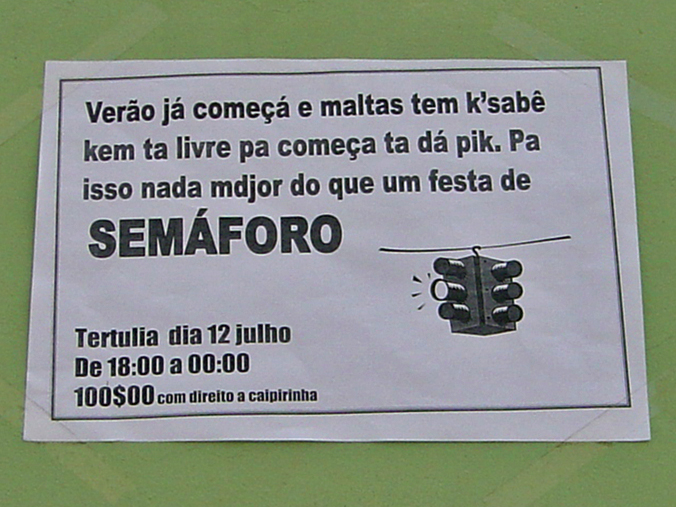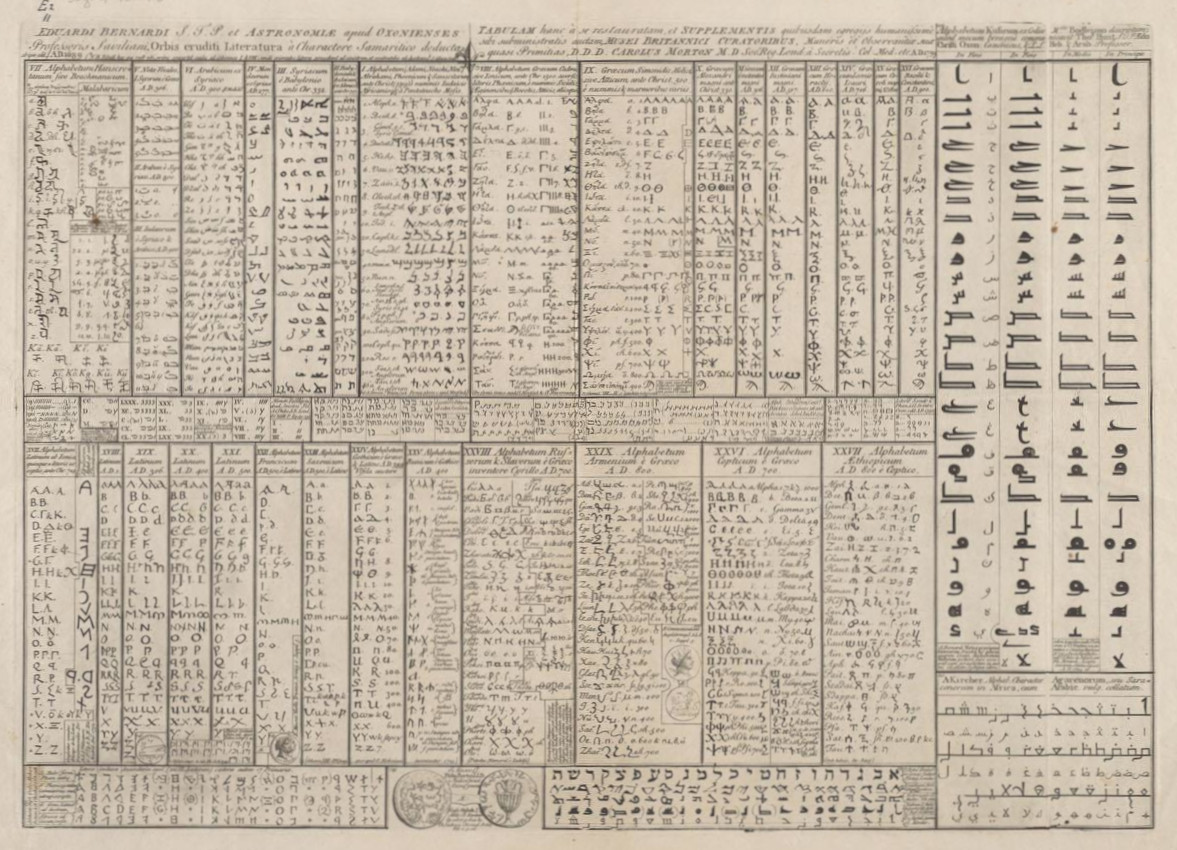|
ALUPEC
The ''Alfabeto Unificado para a Escrita do Caboverdiano'' (Unified Alphabet for Cape Verdean Writing), commonly known as ALUPEC, is the alphabet that was officially recognizedResolução n.º 48/2005' (Boletim Oficial da República de Cabo Verde – 2005) by the Cape Verdean government to write Cape Verdean Creole. Description The ALUPEC is a phonetic writing system based on the Latin script and states only which letters should be used to represent each sound. The system does not establish rules for spelling ( orthography). For that reason, Cape Verdean creole writing is not standardized; the same word or the same sentence may appear written in different ways. Cape Verdeans write idiosyncratically — that is, each person writes in his or her own dialect, sociolect, and idiolect. The descriptive texts concerning the ALUPEC claim that it is "a system composed by 23 letters and four digraphs". What those texts do not specify is that the ALUPEC also includes the letter ''Y'' ... [...More Info...] [...Related Items...] OR: [Wikipedia] [Google] [Baidu] |
Cape Verdean Creole
Cape Verdean Creole is a Portuguese-based creole language spoken on the islands of Cape Verde. It is also called or by its native speakers. It is the native creole language of virtually all Cape Verdeans and is used as a second language by the Cape Verdean diaspora. The creole has particular importance for creolistics studies since it is the oldest living creole. It is the most widely spoken Portuguese-based creole language. Name The formal designation of this creole is Cape Verdean Creole, but in everyday usage the creole is simply called ('Creole') by its speakers. The names Cape Verdean ( in Portuguese, in Cape Verdean Creole) and Cape Verdean language ( in Portuguese, in the Sotavento dialect of Cape Verdean Creole and in the Barlavento dialect) have been proposed for whenever the creole will be standardized. Origins The history of Cape Verdean Creole is hard to trace due to a lack of written documentation and to ostracism during the Portuguese administrati ... [...More Info...] [...Related Items...] OR: [Wikipedia] [Google] [Baidu] |
Alphabet
An alphabet is a standardized set of basic written graphemes (called letters) that represent the phonemes of certain spoken languages. Not all writing systems represent language in this way; in a syllabary, each character represents a syllable, and logographic systems use characters to represent words, morphemes, or other semantic units. The first fully phonemic script, the Proto-Sinaitic script, later known as the Phoenician alphabet, is considered to be the first alphabet and is the ancestor of most modern alphabets, including Arabic, Cyrillic, Greek, Hebrew, Latin, and possibly Brahmic. It was created by Semitic-speaking workers and slaves in the Sinai Peninsula (as the Proto-Sinaitic script), by selecting a small number of hieroglyphs commonly seen in their Egyptian surroundings to describe the sounds, as opposed to the semantic values of the Canaanite languages. However, Peter T. Daniels distinguishes an abugida, a set of graphemes that represent cons ... [...More Info...] [...Related Items...] OR: [Wikipedia] [Google] [Baidu] |
N-diaeresis
"N̈", or "n̈" (referred to as n-diaeresis or n-umlaut) is a grapheme from several minor extended Latin alphabets, the letter N with a diaeresis mark. It occurs in the orthographies of Jacaltec (a Mayan dialect), Malagasy, Tol language, and Cape Verdean Creole, in all four cases representing a velar . It is also used in the Boruca language, Nawdm language, and Ocaina language. Encoding "N̈" and "n̈" appear in very few languages, so they are not represented on any computer keyboard in any language. Neither "N̈" nor "n̈" have precomposed forms in the Unicode character set, meaning their only representation is as a combining sequence of a letter "N" (or "n") followed by a combining diaeresis U+0308. "N̈" and "n̈" are not available as HTML entities. In popular culture The letter is probably best known for its use in the title of the fictional band Spın̈al Tap. Its use there parodies the metal umlaut used gratuitously by several actual bands, such as Blue Öyster Cult, ... [...More Info...] [...Related Items...] OR: [Wikipedia] [Google] [Baidu] |
Portuguese Phonology
The phonology of Portuguese varies among dialects, in extreme cases leading to some difficulties in intelligibility. Portuguese is a pluricentric language and has some of the most diverse sound variations in any language. This article on phonology focuses on the pronunciations that are generally regarded as standard. Since Portuguese is a pluricentric language—and differences between European Portuguese (EP), Brazilian Portuguese (BP), and Angolan Portuguese (AP) can be considerable—varieties are distinguished whenever necessary. One of the most salient differences between the European and Brazilian dialects is their prosody.Parkinson, Stephen. "Phonology". In ''The Romance Languages'' edited by Martin Harris and Nigel Vincent. Routledge, 1988. Pp. 131–169. European Portuguese is a stress-timed language, with reduction, devoicing or even deletion of unstressed vowels, and a general tolerance of syllable-final consonants. Brazilian Portuguese, on the other hand, is of ... [...More Info...] [...Related Items...] OR: [Wikipedia] [Google] [Baidu] |
São Vicente Creole
São Vicente Creole is the name given to the variant of Cape Verdean Creole spoken mainly in the São Vicente Island of Cape Verde. It belongs to the Barlavento Creoles branch. This form of the Cape Verdean Creole has about 80,000 to 100,000 speakers primarily in the São Vicente island, but also in a large segment of the Cape Verdean diaspora population. It is the second most widely spoken Cape Verdean creole. It has produced literature from a lot of writers and musicians including Sergio Frusoni and many more. Characteristics Besides the main characteristics of Barlavento Creoles Cape Verdean Creole is a Portuguese-based creole language spoken on the islands of Cape Verde. It is also called or by its native speakers. It is the native creole language of virtually all Cape Verdeans and is used as a second language by th ... the São Vicente Creole has also the following ones: * The progressive aspect of the present is formed by putting ''tí tâ'' before the verbs: ''tí'' + ... [...More Info...] [...Related Items...] OR: [Wikipedia] [Google] [Baidu] |
Santo Antão Creole
Santo Antão Creole, is the name given to the variant of Cape Verdean Creole spoken mainly in the Santo Antão Island of Cape Verde. It belongs to the Barlavento Creoles branch. It is ranked third of nine in the number of speakers and it is before Fogo and after the neighbouring São Vicente. Characteristics Besides the main characteristics of Barlavento Creoles the Santo Antão Creole has also the following ones: * The progressive aspect of the present is formed by putting ''tí tâ'' before the verbs: ''tí'' + ''tâ'' + V. * The adverb of negation used with verbs, adverbs and adjectives is ''n’''. Ex.: ''Mí n’ crê'' instead of ''M’ câ crê'' “I don’t want”. * The sounds and are palatalized to and when they are at the end of syllables. Ex.: ''fésta'' “party” pronounced instead of , ''gósga'' “tickles” pronounced instead of , ''més'' “more” pronounced instead of . * The stressed final sound is pronounced . Ex.: ''já'' instead of ''djâ'' “ ... [...More Info...] [...Related Items...] OR: [Wikipedia] [Google] [Baidu] |
Paroxytone
Paroxytone ( el, παροξύτονος, ') is a linguistic term for a word with stress on the penultimate syllable, that is, the second last syllable, such as the English word ''potáto'', and just about all words ending in –ic such as músic, frántic, and phonétic; except for rhétoric, aríthmetic (noun) and Árabic. In Italian and Portuguese, most words have paroxytonic stress. In Polish, almost all words have paroxytonic stress, except for certain verb conjugations and a few words of foreign origin. In medieval Latin lyric poetry, a ''paroxytonic'' line or half-line is one in which the penultimate syllable is stressed, as in the second half of the verse "Estuans intrinsecus , , ira vehementi." Related terms are proparoxytone (stress on the third last syllable) and oxytone (accented on the last syllable). See also *Barytone *Oxytone *Penult * Perispomenon * Preantepenult *Proparoxytone In linguistics, a proparoxytone ( el, προπαροξύτονος, ) is a wor ... [...More Info...] [...Related Items...] OR: [Wikipedia] [Google] [Baidu] |
Oxytone
An oxytone (; from the grc, ὀξύτονος, ', 'sharp-sounding') is a word with the stress on the last syllable, such as the English words ''correct'' and ''reward''. (A paroxytone is stressed on the penultimate (second-last) syllable. A proparoxytone is stressed on the antepenultimate (third-last) syllable.) See also *Barytone * Paroxytone * Penult * Perispomenon * Preantepenult *Proparoxytone * Properispomenon *Ultima (linguistics) In linguistics, the ultima is the last syllable of a word, the penult is the next-to-last syllable, and the antepenult is third-from-last syllable. In a word of three syllables, the names of the syllables are antepenult-penult-ultima. Etymology ... * Stress (linguistics) Phonology Ancient Greek Stress (linguistics) {{phonology-stub ... [...More Info...] [...Related Items...] OR: [Wikipedia] [Google] [Baidu] |
Proparoxytone
In linguistics, a proparoxytone ( el, προπαροξύτονος, ) is a word with stress on the antepenultimate (third last) syllable, such as the English words "cinema" and "operational". Related terms are paroxytone (stress on the penultimate syllable) and oxytone (stress on the last syllable). In English, most nouns of three or more syllables are proparoxytones, except in words ending in ''–tion'' or ''–sion'', which tend to be paroxytones (''operation'', ''equivocation''). This tendency is so strong in English that it frequently leads to the stress on derived words being on different part of the root. For example, the root photograph gives rise to the nouns photography and photographer, ''family'' → ''familiar'' and ''familial''. (In many dialects of English, the ''i'' in ''family'' is even deleted entirely, and still has the stress in ''familial'' and ''familiar.'') In medieval Latin lyric poetry, a ''proparoxytonic'' line or half-line is one where the antepenult ... [...More Info...] [...Related Items...] OR: [Wikipedia] [Google] [Baidu] |
Grammatical Conjunction
In grammar, a conjunction ( abbreviated or ) is a part of speech that connects words, phrases, or clauses that are called the conjuncts of the conjunctions. That definition may overlap with that of other parts of speech and so what constitutes a "conjunction" must be defined for each language. In English, a given word may have several senses and be either a preposition or a conjunction, depending on the syntax of the sentence. For example, ''after'' is a preposition in "he left after the fight" but is a conjunction in "he left after they fought". In general, a conjunction is an invariable (non- inflected) grammatical particle that may or may not stand between the items conjoined. The definition of conjunction may also be extended to idiomatic phrases that behave as a unit with the same function, "as well as", "provided that". A simple literary example of a conjunction is "the truth of nature, ''and'' the power of giving interest" ( Samuel Taylor Coleridge's ''Biographia Lite ... [...More Info...] [...Related Items...] OR: [Wikipedia] [Google] [Baidu] |
Nh (digraph)
Nh is a digraph of the Latin alphabet, a combination of N and H. Together with '' ilh'' and the interpunct, it is a typical feature of Occitan, a language illustrated by medieval troubadours. It commonly represents the voiced palatal nasal � which is the same sound as the Spanish letter Ñ. African languages In some African languages, such as Gogo, nh is a voiceless . In the pre-1985 orthography of Guinea for its languages, nh represented a velar , which is currently written ŋ. Asian languages In the Gwoyeu Romatzyh romanization of Mandarin Chinese, initial ''nh-'' indicates an even tone on a syllable beginning in , which is otherwise spelled ''n-.'' Japanese Early romanizations of Japanese, influenced by Portuguese orthography, sometimes used nh to represent a prepalatal. Today, this is usually written ny. Vietnamese In Vietnamese, nh represents a palatal word-initially. It was formerly considered a distinct letter, but is no longer. When this digraph occurs word ... [...More Info...] [...Related Items...] OR: [Wikipedia] [Google] [Baidu] |

